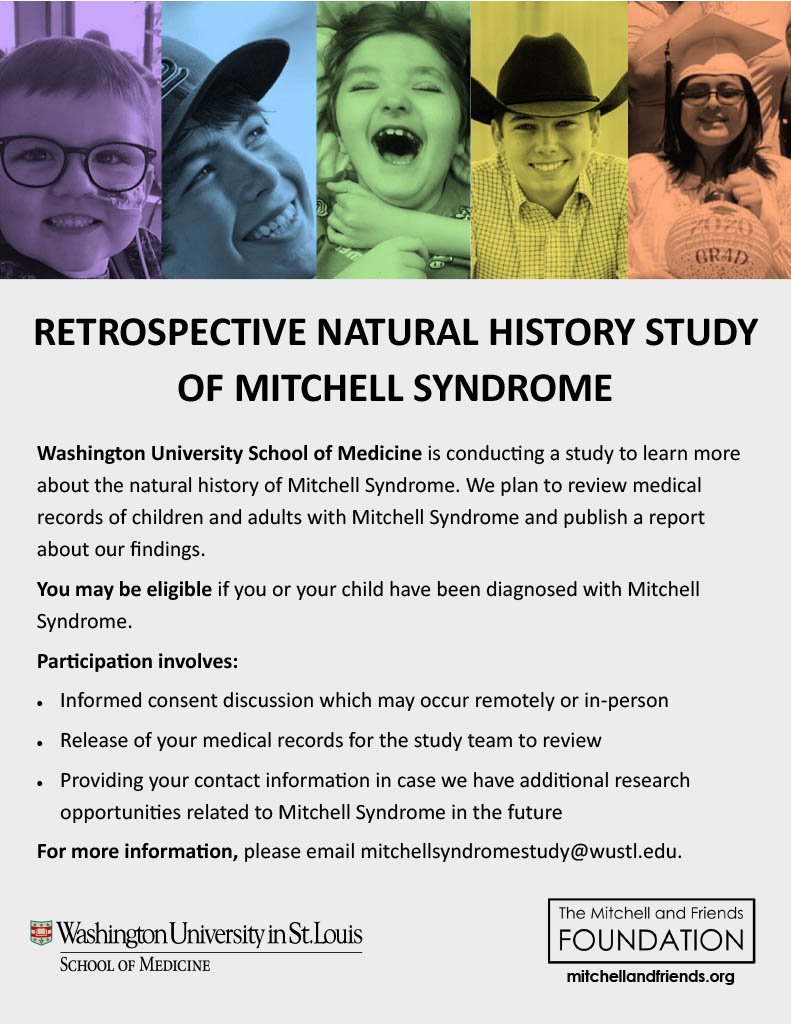Retrospective Natural History Study of Mitchell Syndrome Now in Process (January 2024 Newsletter)
Dear Friends…
With only 25 identified patients around the world (living and deceased), we still know very little about Mitchell Syndrome. We believe we know its genetic origins, as a certain kind of mutation on the ACOX1 gene which hinders a specific kind of nerve cell’s ability to rid itself of the toxic buildup of hydrogen peroxide. We also have an idea of the phenotype—or observable characteristics—of the illness. People with Mitchell Syndrome have balance problems, hearing loss, fine motor damage, and eventually, cognitive decline and death.
All that knowledge is novel, though—gleaned very recently from the collective input of a handful of doctors and a couple dozen patients. No two patients have the the exact same presentation, either. And our understanding of what kind of treatments might help with Mitchell Syndrome is cursory, and in the rudimentary early stages.
Basically, we have much to learn.
When Michele and I started The Mitchell and Friends Foundation in 2021, we knew that one of our early goals would be to help set up a formal study, monitored and managed by professional researchers, to gather medical data from as many known Mitchell Syndrome patients as possible. The collection of this information will help us identify patterns and fill out our understanding of this disease. Having this kind of study completed and published is also a necessary step towards having Mitchell Syndrome identified as a rare disease worthy of study by other institutions and pharmaceutical companies.
Setting up such a “Retrospective Natural History Study” was going to be hard, though. Neither Michele nor I are researchers, and these things require medical facilities not found in our basement, and medical professionals not in our friend group.
This is why we are grateful and excited to announce that The Department of Neurology ALS Center at Washington University School of Medicine in St. Louis, MO, has agreed to donate research time and personnel to get this study up and running. Already the study has been approved by Wash U’s Institutional Review Board, and several Mitchell Syndrome families have participated—answering questions, donating tissue for research, and making plans to visit the lab. And as proud parents, Michele and I are pleased to note that Mitchell Herndon’s nerve and skin biopsies (collected and stored in 2013 and ‘17, respectively), have already been useful in this study—along with all the copious records Michele kept on his condition.
This Natural History Study is another small step towards a big goal—the curing of Mitchell Syndrome. Thank you to the families who have participated. Thank you to The ALS Center for their hard work in getting this study up and running. (See the team members, below.) And thank YOU for your ongoing encouragement and financial support. With your help, we can defeat this, the rarest of rare diseases.
Sincerely,
Matt and Michele Herndon with The Mitchell and Friends Foundation
Meet the Research Team
From top left clockwise: Jesse Markway, Clinical Research Specialist; Kelly McCoy Gross (RN, BSN), Clinical Nurse Specialist; Jeri Oranski, Clinical Research Specialist; Bethany Gannon, Clinical Research Study Assistant. Thanks to this wonderful team of researchers for their service!





